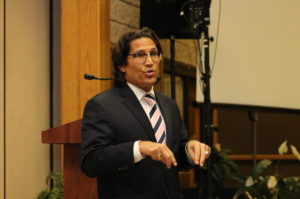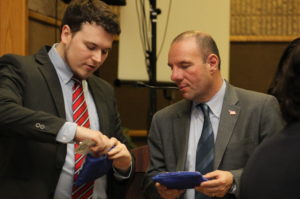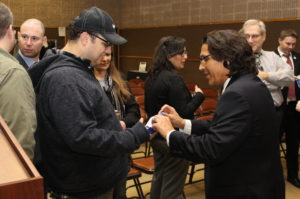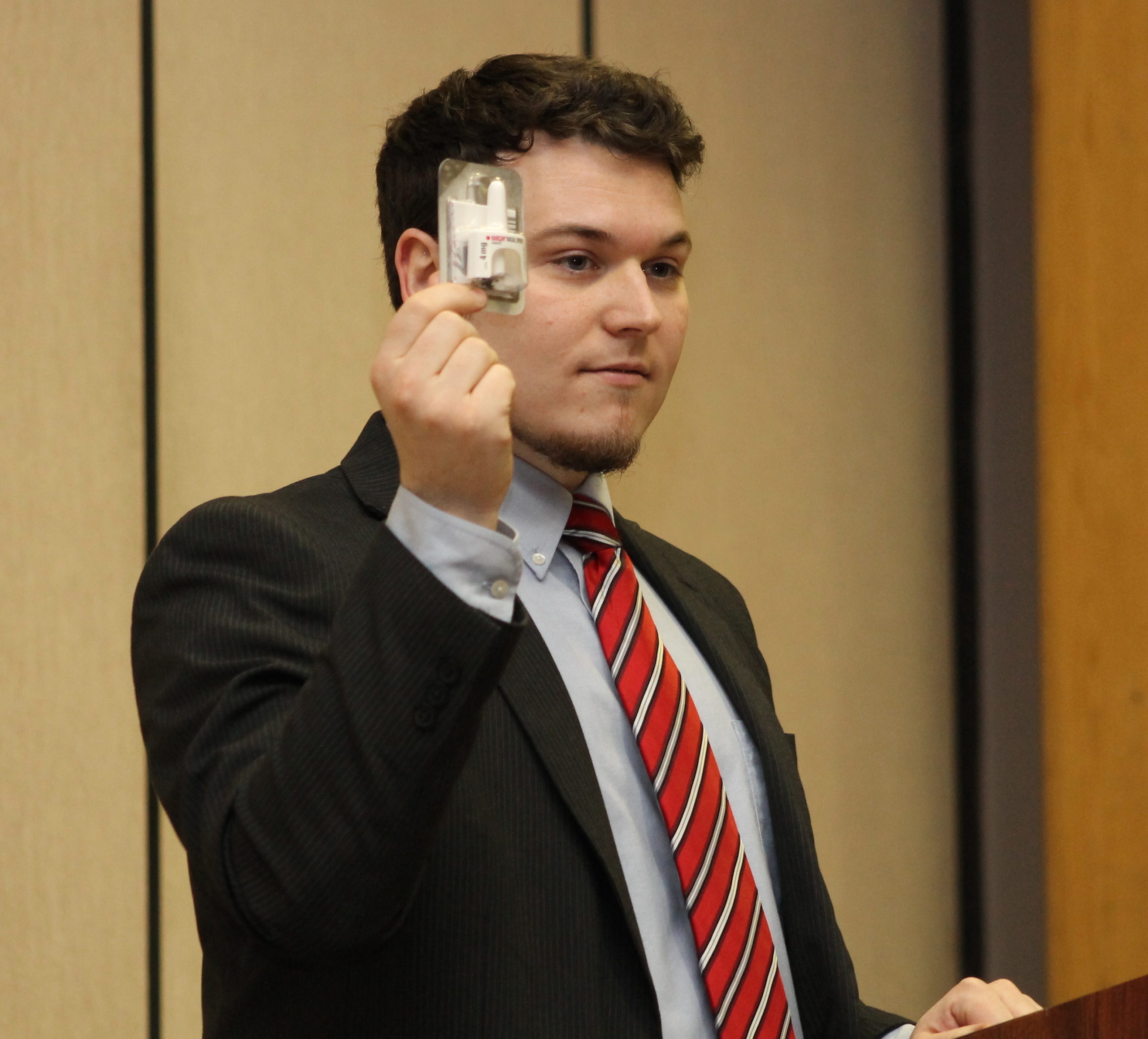About 15 people, including elected officials and their staff, came to a Narcan education and training seminar hosted by Nassau County and the Town of North Hempstead in Roslyn on Friday night.
In about 10 minutes, Steven Chassman, executive director of the Long Island Council on Alcoholism and Drug Dependence, and clinical director Adam Birkenstock trained residents, including Nassau County legislators Arnold Drucker (D-Plainview) and Josh Lafazan (D-Syosset) and Town of North Hempstead Councilman Peter Zuckerman, to administer naloxone, more commonly known as Narcan, at the Roslyn Community Center.

“If each one of us takes this back to our kitchen table, to Starbucks or to whatever party you’re going to later and shares this information, this room is full already,” Chassman said. “Even though they’ve missed the Narcan training and won’t leave with a kit, you can come to our offices six days a week, 15 hours a day and be trained for free. This isn’t an opportunity lost, but an opportunity still in process.”
Chassman, a healthcare professional for more than 25 years, described the opioid epidemic that killed approximately 64,000 people nationwide last year as “the worst healthcare crisis we’ve seen on Long Island, across New York and across the country.”
“I’m not going to quantify human toll, but we’ve surpassed HIV and AIDS a long time ago,” Chassman said.
Last year, a projected 595 people died from opioid overdoses in Nassau and Suffolk counties.
In Nassau County, 136 deaths have been confirmed and 290 in Suffolk County through September, and both county medical examiner’s offices are working through more cases. Chassman said he believes that is a low estimate.
“Five years ago we were appalled that it was 367 — one person a day,” Chassman said. “Now, with Nassau and Suffolk, 600 people were lost to opioid overdose.”
In 2017, however, Chassman said nearly 1,000 lives were saved with Narcan, and everyone at the seminar went home with a kit, including two doses of Narcan, sterile gloves, a mouth guard for rescue breathing and alcohol wipes.
The 62-year-old organization was the first to bring Narcan to Long Island about eight years ago, Chassman said, providing free kits that included two injectable doses of two milligrams each.

Now, Birkenstock said, the kits have been increased to two four-milligram doses through a nasal spray that requires no assembly partly because of the addition of fentanyl and its derivatives to heroin.
A few years ago in Suffolk County, Birkenstock said, most cases could be remedied with one dose of Narcan and about 3 percent of cases required two or more doses. Now, he said that number is up to 25 percent.
Birkenstock led the Narcan demonstration and said that if someone has taken drugs besides opiates or a small child or animal gets into the medication, Narcan will not interact with other drugs or harm someone not on opiates.
Birkenstock said the first step is to try to speak to the potentially overdosing person, possibly shaking or pinching their shoulder for a response or a sternal rub with two fingers down the center of the rib cage.
Birkenstock said to look to see if the person is still breathing or possibly turning blue, especially around the lips or nail beds.
“If you have to get close to them to see if they are breathing, that’s already a bad sign,” Birkenstock said.
Call 911 as soon as you believe there is a problem, Birkenstock said, and tell the operator if the person is not breathing or unconscious and that you plan to administer Narcan.

To use Narcan, Birkenstock said, tip the person’s head back slightly before inserting the inhaler into the person’s nose and pressing the plunger all the way down twice in each nostril.
The medication is absorbed by mucous membranes, Birkenstock said, and the back of the throat is also an option if the nose is not accessible.
When it is effective, Chassman said, the person will immediately “spring back to life” and be in physical withdrawal. If a response does not come within a minute or two, administer the second dose, Birkenstock said, and hopefully a police officer or emergency medical technician will arrive soon after.
Chassman said the doses are good for about two years, and the council will replace any expired or used kits for free at its offices.
“We wished we didn’t have to distribute naloxone,” Chassman said. “We wish people weren’t doing heroin just like we wish people weren’t doing a host of unhealthy things. Part of risk reduction is, it’s not encouraging the behavior; it’s meeting the behavior where it’s at.”



